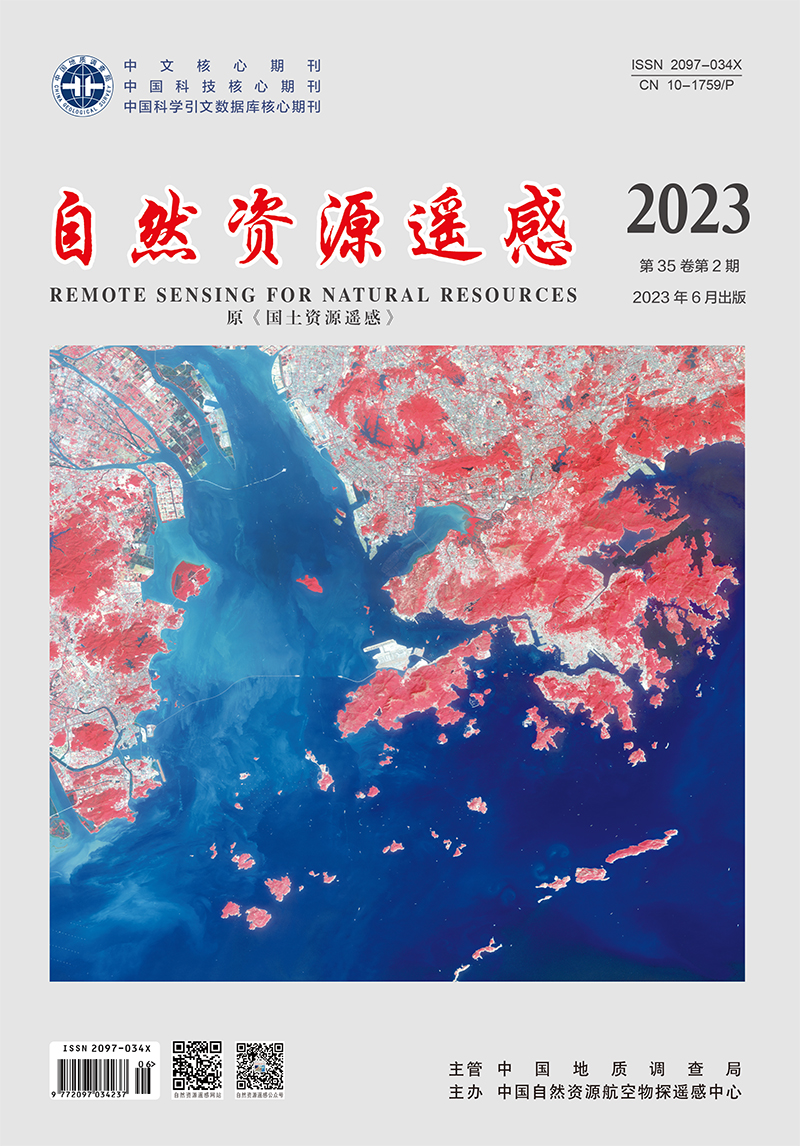XIONG Dongyang, ZHANG Lin, LI Guoqing. 2023. MaxEnt-based multi-class classification of land use in remote sensing image interpretation. Remote Sensing for Natural Resources, 35(2): 140-148. doi: 10.6046/zrzyyg.2022136
| Citation: |
XIONG Dongyang, ZHANG Lin, LI Guoqing. 2023. MaxEnt-based multi-class classification of land use in remote sensing image interpretation. Remote Sensing for Natural Resources, 35(2): 140-148. doi: 10.6046/zrzyyg.2022136
|
MaxEnt-based multi-class classification of land use in remote sensing image interpretation
-
1. The Research Center of Soil and Water Conservation and Ecological Environment, Chinese Academy of Sciences and Ministry of Education, Yangling 712100, China
-
;2. Institute of Soil and Water Conservation, Chinese Academy of Sciences and Ministry of Water Resources, Yangling 712100, China
-
;3. University of Chinese Academy of Sciences, Beijing 100049, China
-
;4. State Key Laboratory of Soil Erosion and Dryland Farming on the Loess Plateau, Northwest A&F University, Yangling 712100, China
More Information
-
Corresponding author:
LI Guoqing
-
Abstract
The one-class classification (OCC) of land use in image interpretation is a hot research topic of remote sensing. Many novel algorithms of OCC were introduced and developed. The maximum entropy model (MaxEnt)-the most promising OCC algorithm as evaluated-is widely used in the OCC study of land use. However, it is unclear about the applicability of these algorithms (including MaxEnt) in multi-class classification (MCC) of land use. Thus, this study established a procedure for MaxEnt-based land-use MCC in remote sensing image interpretation and applied the procedure to the land-use MCC of the Yunyan River basin. The overall classification effect of MaxEnt and the performance of MaxEnt in the prediction of various land were evaluated using overall classification accuracy, Kappa coefficient, sensitivity, and specificity. Moreover, the Kappa coefficient was also used to evaluate the consistency between MaxEnt and random forest (RF), maximum likelihood classification (MLC), and support vector machine (SVM) in the prediction of land use maps. The results are as follows: ① MaxEnt showed the best classification effect, with overall classification accuracy of 84% and a Kappa coefficient of 0.8; ② MaxEnt showed no worst performance in any land type, and even performed the best in some land types; ③ MaxEnt showed high classification consistency with RF and SVM, and the consistency evaluation of the land use maps obtained using the three algorithms yielded Kappa coefficients of greater than 0.6; ④ Compared with the other the three algorithms, MLC yielded a significantly different land use map, with a Kappa coefficient of less than 0.4. This result indicates that MLC is not applicable to the interpretation of land use of the study area. The procedure established in this study only depends on the occurrence probability of land use rather than the threshold selected. As a result, the OCC algorithms represented by MaxEnt have great potential for application to the land-use MCC in remote sensing image interpretation. In addition, the introduction of parallel computing into large-scale land use interpretation will help improve the efficiency of solving MCC problems using MaxEnt.
-

-
-
Access History







 DownLoad:
DownLoad: